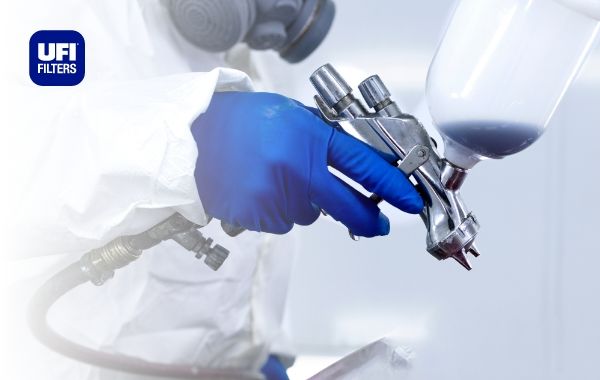
In the last few months, we delved into some of the most common and widespread methods used in the hydraulics industry to prevent corrosion of materials, mainly metallic and inorganic coatings.
In this month’s post we will end our journey into the techniques for protecting metal parts from corrosion by looking at the latest methodology used in the component industry: organic coatings.
What are organic coatings?
By ‘organic coatings’ we mean the layers formed on the surface of various metal materials through the use of paints, varnishes, enamels, bitumen, etc.
In particular, the most common organic coatings in the hydraulics industry are paints.
What are paints?
Paints refer to heterogeneous systems consisting of a set of pigments dispersed in a film-forming compound (binder) brought to the desired application viscosity mixed with solvents and thinners. Application of these compounds to the metal surface forms a solid, adherent film to protect the metal material.
The use of protective organic coatings based on oils, fats, waxes and bitumen dates back to antiquity; that of actual paints for the protection of metal materials only to the Eighteenth Century. Even later, only to the last century, dates the formulation of paints specifically designed against the aggressive action of chemicals, made possible by binders resistant to acids, bases, salt solutions and hot corrosive fumes.
The protective action of paints
Paints protect the surfaces to which they are applied through two mechanisms:
Barrier-type effect, forming one or more layers that prevent the diffusion of the aggressive agent (in most cases oxygen) or reduce the ion concentration, increasing the resistance in the area close to the metal.
The protective effectiveness of the barrier depends on 3 factors:
- the thickness; greater thickness corresponds to lower permeability. In hydraulics, thicknesses of 200-300 microns must be exceeded to withstand aggressive environments and fluids.
- the percentage of solvent within the paint; the more solvent is present the less effective the barrier will be (the number of particles generating the barrier decreases). Otherwise, the less solvent is present the more difficult it becomes to apply the paint evenly.
- the effectiveness of the barrier is also enhanced by the homogeneity of the application.
Active-type effect, which results in 2 modes:
- transferring to the metal surface some of the protective property of the pigments to create inhibition and passivity conditions;
- providing additional protection by deteriorating some of the internal particles of the pigments in place of the metal surface (zinc-based paints ).
Usually, painting cycles used for hydraulic components consist of several coats and take advantage of both protective mechanisms described above. In addition, the choice of materials and protective cycle, the preparation of primers, or the method of paint application are critical to ensure the desired protection of the hydraulic component for the expected service life.
How painting works
To achieve the required degree of protection, a multilayer system, consisting of several painting layers, is used:
- Preparation and pretreatment of the metal surface to be painted
Before any treatment is carried out, metal surfaces must be properly prepared so as to
- remove natural or processing-derived oxides, any dirt or contaminants,
- make the surface suitable for anchoring the protective layer.
The main metal pretreatment techniques are:
- Degreasing with solvents or detergents
- Pickling
- Sandblasting, used mainly for the preparation of steel surfaces. In cases of painting for aggressive environments with high-thickness painting, it is the most widely used.
- First coat, primer
The primer is entrusted with the task of adhering perfectly to the base metal and acting as an anchor for subsequent coats. It provides an initial barrier to inhibit the corrosive process. If additives are required or present to make an active protection, they are usually included in this layer.
- Second coat, intermediate.
The second coat is to give thickness and increase the impermeability of the film, ensuring resistance to the external environment (barrier effect). Can be divided into several coats if thickness becomes important.
- Top coat or cover coat.
The top coat is formulated to achieve maximum chemical resistance and protect the underlying layers from UV rays that could deteriorate the paint.
In conclusion, successful painting depends on the correct choice of painting cycle in relation to the aggressiveness of the environment in which the component will be used, the type of metal surface to which it is applied, proper surface preparation and appropriate application of paints.
It is therefore recommended to rely on industry professionals who can assess the best treatment needed to protect a component based on the specific application and environmental conditions in which the system will operate.
If you have any questions or concerns regarding the best paint treatment for your application, please contact our Sales Team.
Stay tuned!